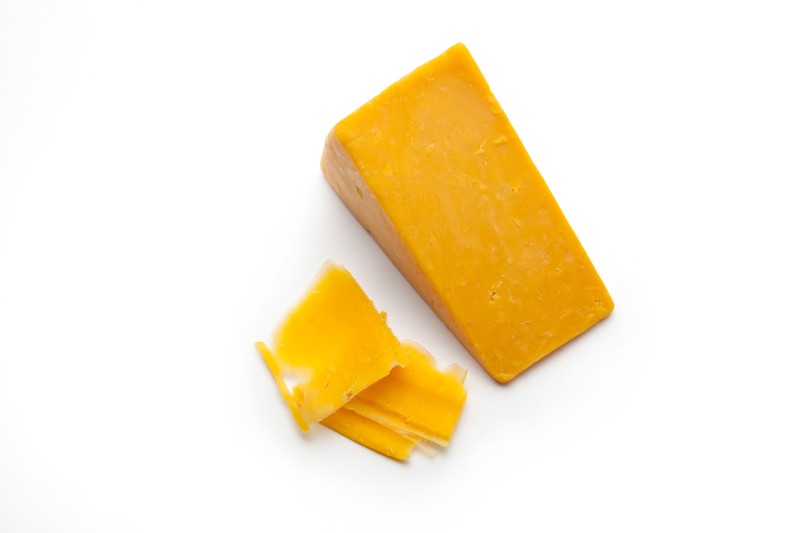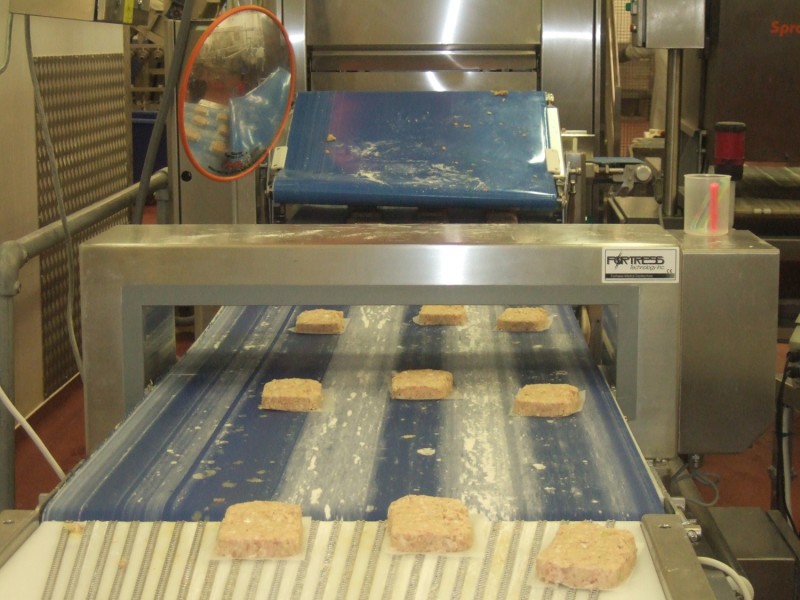Fortress Technology (Canada) - The global metal detector market is buoyant and expected to reach an estimated $1.6 billion by 2022. Forecast to grow at a CAGR of 5.1% from 2017 to 2022, continued investment can be attributed to stringent government and consumer protection regulations. The industrial segment, comprising the food and pharmaceutical sectors, is expected to remain the largest end user of metal detectors.
Given that investment in inspection systems by food factories looks set to continue, Phil Brown, MD of Fortress Technology Europe tackles the equipment options in the most widespread food and packaging application scenarios, cutting through the confusion on the pros and pitfalls of metal detectors versus x-ray.
Choosing the best food inspection technology is not always straightforward. Some users gravitate towards x-ray systems perceiving them to be more versatile. It’s true that they have the ability to carry out further product inspection functions that are beyond the scope of metal detectors, such as spotting missing or broken products or checking the fill level. However, users need to be sure that any technical advantage will actually add value, since the pros and cons of metal detection versus x-ray can make it difficult to gauge which technology is the most effective and cost-optimised solution in practice.
Success with metal detectors tends to depend on the materials involved (the product, the packaging and the contamination), while x-ray detectors are more likely to be affected by other parameters such as the shape of product and the mode of transport through the unit, in addition to density differentials. Putting this into context, x-ray systems cannot generally be used in a gravity inspection configuration because of the inconsistent density within the falling product stream. This rules them out of many bagging operations, such as vertical form fill and seal lines.
Phil provides several impartial pointers to help make the decision-making process less of a minefield.
1. Consider Total Cost of Ownership not just purchase price:
Financial outlay is naturally a big consideration for food plants. Typically, you can expect to pay in the region of £4,000 to £18,000 for a metal detector, depending on the size and complexity of the application. Yet, compared to £35,000, potentially in excess of £80,000, to install x-ray, the price difference is quite considerable. Additionally, the price differential between metal detectors and x-ray systems increases incrementally according to the size of the aperture.
A common mistake when calculating Total Cost of Ownership is overlooking running costs for the lifetime of inspection equipment and factoring in more subtle costs such as interruption to production, machine testing, training and support, and hidden vendor costs. These after-purchase costs can be substantial and it’s quite customary for x-ray running costs to be much higher than metal detectors.
For example, if the x-ray system requires cooling systems, such as fans or air conditioners, this can drive up energy consumption. Replacing generators and sensor can also be quite costly.
In contrast, metal detectors are designed to be more robust in extreme environments, e.g. freezers, wet processing plants such as fish packing, and when dry ingredients are prevalent, such as flour in bakeries and food manufacturers that use or pack spices and seasonings.
The costs associated with product changeovers, in addition to the floor space occupied by the inspection equipment, are also essential when doing TCO calculations.
Legacy inspection systems have a reputation for being expensive to maintain. To avoid scrapping good kit prematurely, investigate the upgrade options. Realistically, with the right maintenance, a well-built metal detector can run for 20+ years. Fortress Technology can even upgrade its robust entry level Phantom metal detector with additional data capture features from its Stealth model should food factories need to comply with retailer codes of practice.
Finally, depreciation of the equipment should be factored in. Safety and liability concerns often means that that x-ray systems have limited or poor resale value.
Of course, other factors may outweigh cost considerations.
2. Study the machine’s sensitivity:
Global consumer awareness about food integrity combined with the stricter enforcement of regulatory standards by producers and manufacturers is accentuating demand for highly sensitive inspection equipment. Many factors impact sensitivity in both x-ray and metal detectors, including aperture size.
Metal detectors can identify all types of metal based on magnetic and conductive properties, while an x-ray system depends on density differentials. This means that an x-ray system may struggle to detect aluminium, including foil or metallised film. Equally, foil packaging can present a challenge for metal detectors, which can only detect magnetic or ferrous metal contamination inside the package, while to some extent an x-ray system can detect all metals.
Orientation effect occurs if a contaminant is non-spherical, such as a piece of wire, in which case the ability to spot it may depend on the orientation it presents to the detector. In the case of x-rays, the presenting face must be equal to or greater in size than the base resolution of the detector diodes, which is analogous to the pixel resolution in a camera. Metal detectors are certainly not immune to the orientation effect, but they do not have this absolute cut-off.
Product effect may be produced by the product itself or by its packaging. Until recently, anything wet or conductive impacted the performance of metal detectors, especially in the case of stainless steel contaminants. This is because metal detectors work by spotting materials that create a magnetic or electrical disturbance as they pass through an electromagnetic field. Unlike ferrous metals, stainless steel is usually non-magnetic and a poor electrical conductor.
Consequently, a stainless steel swarf, metal shard or narrow wire hidden in a dry product typically needs to be 50% larger than a ferrous sphere to generate a similar signal size. This disparity can rise to 300% in wet products, such as ready meals, meat, fish, sauces, preserves and bread, because moisture acts as a conductive and the metal detection signal can be swamped by product effect. Solutions, such as simultaneous multi-frequency, are now available on the market to address this longstanding issue.
Both product density and how uniform it is can affect the sensitivity of an x-ray.
3. Think about practicalities:
The physical size of machinery is a major consideration, driven in part by rising prices of industrial real estate. Limited space usually favours metal detection, as do applications where the speed of the product passing through the machine is very fast or very slow.
Maintaining a reliable performance over time demands periodic calibration and validation checks on both types of technology. In some cases, the process can halt production several times each shift. Users may therefore want to reduce the frequency, but they need to bear in mind that the longer the interval, the more product may have to be discarded or recalled if a problem with the inspection system is discovered.
While a well-maintained x-ray system presents a minimal hazard, some systems require protective lead curtains to contain the x-rays. These in turn need condition monitoring and must not come into contact with unpackaged product. Care must also be taken that they don’t impede the passage of lightweight products through the system.
Summing up, Phil comments: “It can be quite easy to overthink the options. In some applications, it is obvious which type of inspection technology to go for, since only one of them can reliably detect the contaminants that pose the risk you are trying to mitigate. As food factories strive to curtail rising food prices through widespread adoption of automation and sourcing ingredients through different suppliers, the risks increase incrementally. Installing a metal detection system is the first line of defence, with today’s technology on a par with, if not better than, most x-ray features.”












































Interested? Submit your enquiry using the form below:
Only available for registered users. Sign In to your account or register here.